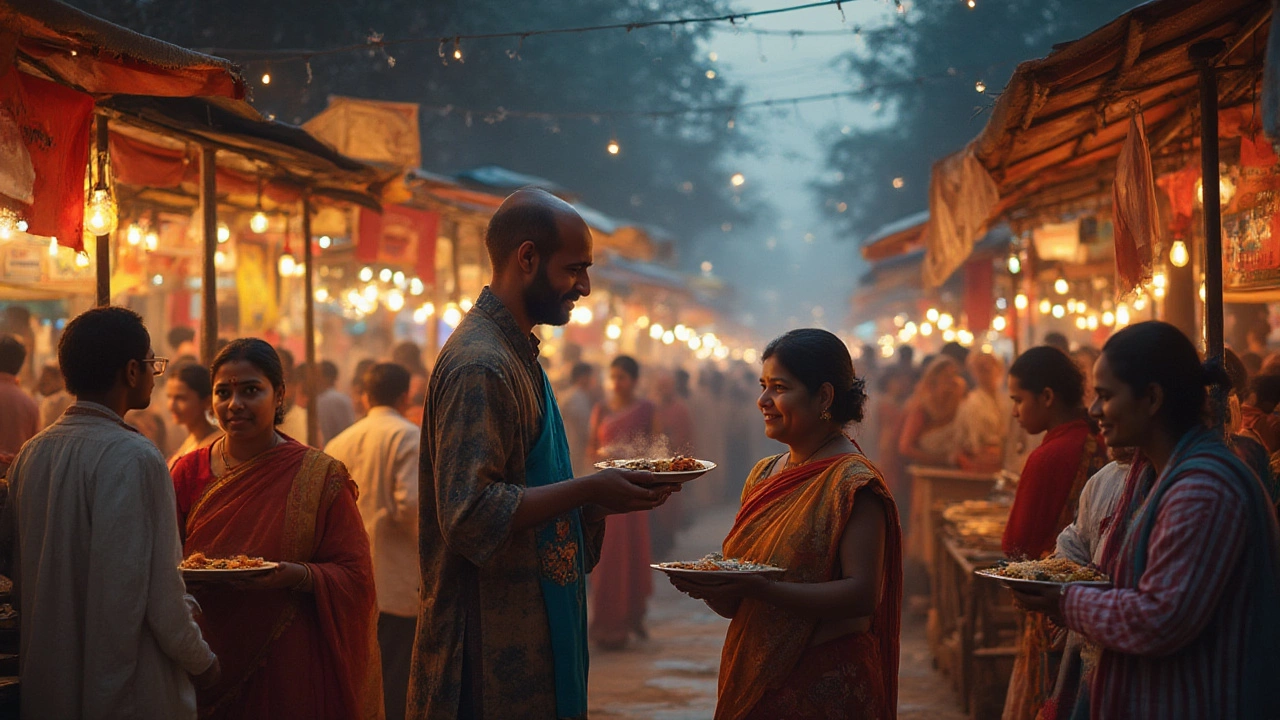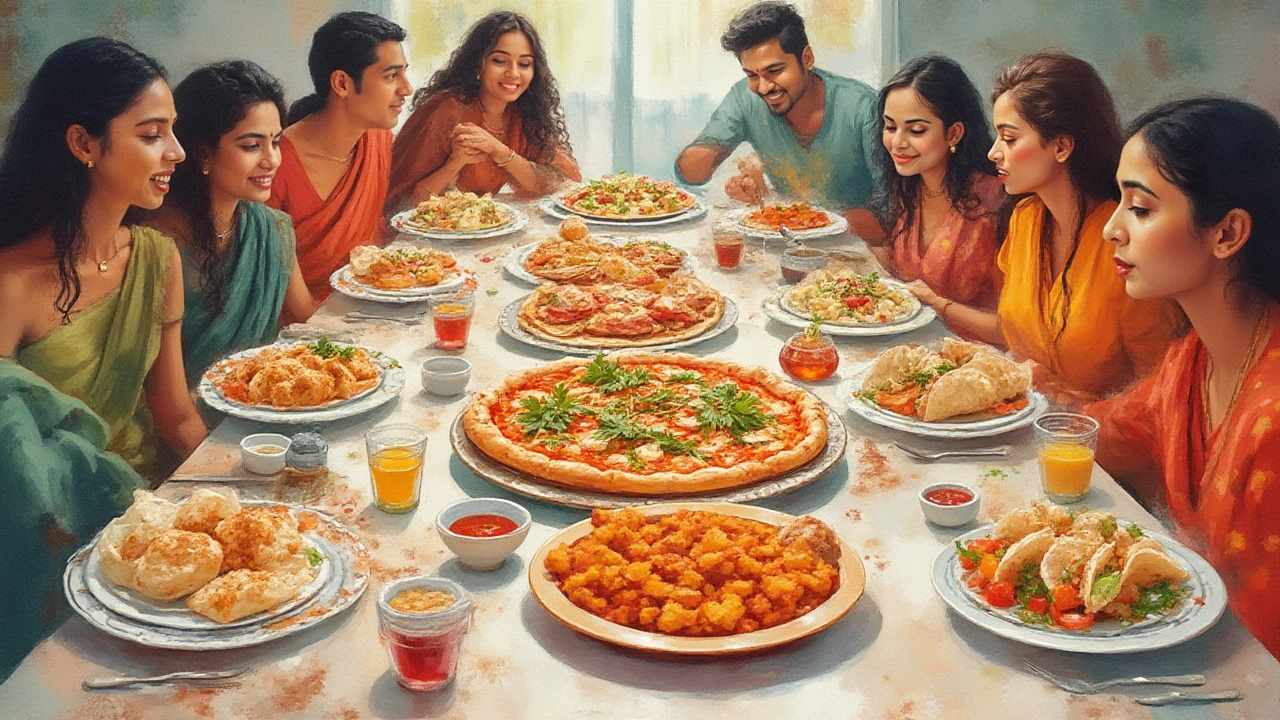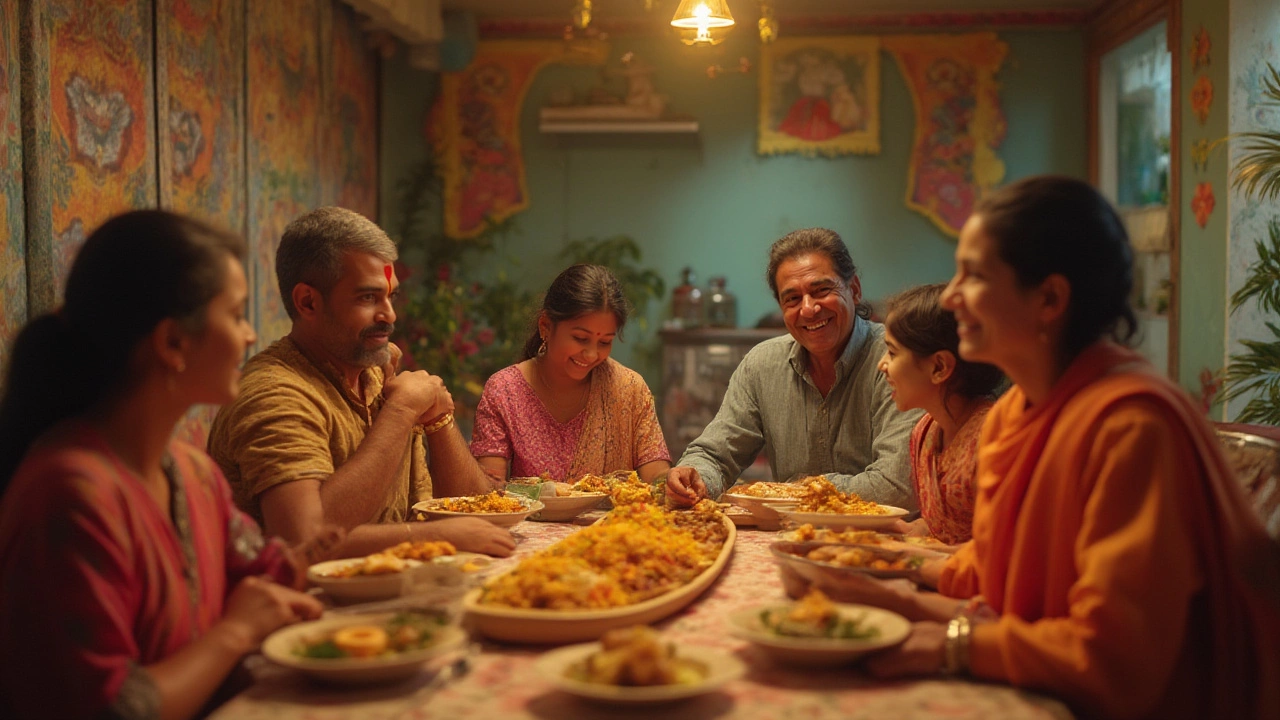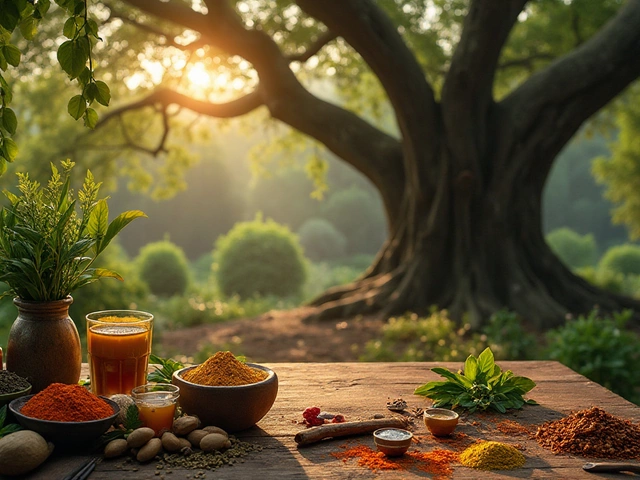Ever wondered why breaking bread feels so comforting, or why every family gathering seems to gravitate toward the kitchen? Food isn't just about getting calories or tasting something nice. It’s also loaded with history, emotions, and a sense of belonging. For centuries, these food rituals weren’t just about dining—eating together meant passing on unwritten rules, memories, and even secret family recipes. These are the backbone of cultural food traditions, and once you start digging, the layers go deep—deeper than the last piece of pavlova at a New Zealand BBQ.
What Are Cultural Food Traditions?
Cultural food traditions are deeply woven into the identity of a community, family, or country. They include the recipes people pass down through generations, the ways certain foods are prepared and eaten, and the events or rituals attached to meals. Take for example the way the French serve their cheese after the main course, or the tea ceremonies in Japan that are choreographed down to the last pour. These aren’t random habits; they’re rituals built over time, shaped by available ingredients, religion, trade, migration, even war and colonization. Every detail—from what’s cooked to who gets served first—can carry meaning.
In New Zealand, we see this in the hangi feast, where food is cooked in an earth oven, a practice that speaks to Māori heritage. In Italy, Sunday family lunch might mean handmade pasta prepared over several hours, with everyone squeezed around a table, laughing and arguing. These rituals go way beyond flavor—they teach respect, patience, and a sense of place. Nothing shows just how unique these traditions get like looking at the world’s food. In Ethiopia, for example, meals are eaten communally without utensils, an act that highlights togetherness and trust. Meanwhile, Jewish families may celebrate Shabbat dinner with braided challah bread, lighting candles to usher in peace and reflection each week.
Food traditions also adapt to the seasons and what nature offers up. Think of the tomato festivals in Spain, or the harvest mooncakes in China. Even the foods that keep popping up at holidays—like turkey at Thanksgiving in the US, or feijoada stews on Saturdays in Brazil—become symbols passed down, generation to generation. Food traditions reflect what people value: hospitality, gratitude, respect for ancestors, or a simple joy in eating together. The world’s kitchens are more than just places to cook—they’re libraries without books, bursting with stories you eat, not read.
The Roots and Evolution of Traditional Foods
So, where did these traditions start? It usually comes down to environment and survival. People cooked what grew nearby, or what could be traded for. That’s why spicy foods crop up in hot climates—pungent spices helped keep food from spoiling before refrigeration. In colder spots like Scandinavia, you get a lot of pickles, root vegetables, and smoked fish—preserving food for long, dark winters. Geography shapes the groceries, but people’s beliefs and their run-ins with outsiders shape the rules and rituals.
Contact with new cultures often changed the eating landscape overnight. Tomatoes and potatoes are icons in Italian and Irish cooking, but both only arrived from the Americas in the 1500s. Curries in the UK? Thank colonization for that mashup. And in Southeast Asia, centuries of trade routes brought coconuts, chilies, even Indian biryani-style rice dishes. Food travels, and people adapt. All this movement mixes things up, so you get mashups: Korean tacos in LA, sushi pizza in Canada, or even butter chicken pies at your local New Zealand bakery.
| Country | Key Traditional Food | Unique Food Ritual |
|---|---|---|
| Japan | Sushi, Miso Soup | Tea ceremonies, using separate chopsticks for serving |
| Mexico | Tamales, Mole | Día de los Muertos altars with food offerings |
| India | Curry, Roti | Eating with hands, serving elders first |
| Greece | Moussaka, Souvlaki | Savoring meals slowly, sharing meze platters |
| New Zealand | Hangi, Pavlova | Community earth-oven feasts, bringing a plate to share |
Sometimes, these traditions are nearly lost. Wars, famines, and migration put pressure on what people eat, and old recipes fade when younger generations move away or reach for fast food. But lately, there’s a big push to celebrate and protect these rituals. Food festivals bask in nostalgia for grandma’s recipes, and cookbooks brim with stories about picking fruit off an old tree or making dumplings at Lunar New Year. These stories aren’t just heartwarming—they’re powerfully grounding at a time when everyone seems to be moving too fast.

How Culture Shapes What, When, and How We Eat
Every culture has its own unwritten food rules. Some are practical, others are symbolic, and almost all are designed to build connection. Ever noticed how the French take ages at lunch, or how some Mediterranean countries eat dinner close to midnight? In many Asian countries, meals are about sharing: dishes go in the center, everyone digs in, and it’s considered weird to take the biggest piece for yourself. In contrast, in the West, meals might be served in separate portions, quietly, maybe even in front of the TV.
Rituals extend far past the table. In Morocco, pouring tea from high above the cup is a sign of respect. Orthodox Christian families might break fast with a feast after long periods of food restriction. Fasting and feasting are common ways for people to reflect, celebrate, or show gratitude. But don’t think it’s all about grand holidays. Tiny rituals matter, too: Sunday roasts in the UK, birthday cakes with candles everywhere, or a once-a-week call home to ask how to make that one soup that always feels like a hug in a bowl.
Cultural food traditions are so wrapped up in daily life that people hardly notice until they leave home. Immigrants, for example, use favorite recipes as a way to remember and share their roots. Hosting a Diwali dinner or bringing borscht to a school potluck becomes a statement: "This is where I'm from, and you’re invited to join in." In this way, food can quietly fight prejudice and bridge communities. When you try another culture’s dish, you’re not just tasting spices or sauces—you’re literally taking in a little of someone else’s identity. No wonder food swaps, cooking classes, and multicultural festivals are growing every year.
Preservation, Innovation, and the Risk of Loss
The world is eating faster, and sometimes cheaper, than ever. Fast food chains muscle in on local recipes, and traditional markets struggle to compete with supermarkets. This puts plenty of food rituals at risk—who’s got time to ferment kimchi for days, or tend a fire for hours to perfect barbecue? Not everyone, sadly. But food traditions aren’t disappearing without a fight. Grandparents drag grandkids into the kitchen to teach them to roll sushi or carve roast lamb. Small restaurants and food trucks advertise their story, not just their menu. Meanwhile, social media is packed with family recipes and cooking tutorials, offering a lifeline to help folks reconnect with their roots from anywhere on the globe.
Countries now proudly protect recognized food traditions. UNESCO’s list of Intangible Cultural Heritage includes the Mediterranean diet, Mexican cuisine, and even khachkars, or Armenian bread-making. This isn’t about being fancy—it’s a direct way to keep skills alive, encourage local farming, and get young people curious about something slower, less commercialized, and a lot more satisfying. Even cooking shows and documentaries join the movement, showing off grandmothers’ stubborn commitment to doing things “the old way.” It’s more than nostalgia; there’s evidence that learning traditional cooking skills can boost family connection, lower stress, and even help the environment by relying on seasonal, local food.
So how can you play your part? Easy. Ask about your family’s “secret” recipes. Experiment with a new dish from your friend’s culture. Visit a local market and chat to the stallholders. If you’re traveling, skip the international chain and try the street food, the tiny diner, or the home-cooked meal. Share stories, swap recipes, or just listen—food always tastes better with a dash of curiosity and a sprinkle of generosity.

Food Traditions in Everyday Life: Tips for Exploring and Embracing Them
Cultural food traditions aren’t locked away in history books or museums. They’re as accessible as your neighbor’s kitchen, the bakery down the road, or your own memories of Sunday lunches. Getting involved is easier than you might think. Here are a few ideas for exploring cultural food traditions that don’t need a plane ticket or a trust fund—just a little curiosity and an open mind.
- Talk to Elders: Ask parents, grandparents, or even that friendly shopkeeper about the recipes they love and remember. Sometimes, the best dishes don’t even have written recipes—they live in stories and hands that “just know” when it’s ready.
- Cook Something New: Pick an unfamiliar recipe from a different part of the world, gather the ingredients, and see how it turns out. Failures make great stories—and the occasional surprise winner might become your new favorite.
- Host a Food Swap: Invite friends to bring a dish from their background (or try to cook one from someone else’s culture). You’ll learn a lot, and the eating part is always worth it.
- Visit Cultural Festivals: Most towns host multicultural food festivals at least once a year. You can sample bites from every corner of the world in one day, and likely meet the cooks.
- Ask Questions: When you visit a new restaurant or market, chat to the staff. Where did this dish come from? What’s the best way to eat it? People often love to share the stories behind their food.
If you want to go deeper, think about *why* certain foods matter to communities. Is it about religion, survival, seasonal abundance, or celebration? Do the foods mark rites of passage—birthdays, weddings, funerals? The more you ask, the richer the experience.
Food traditions evolve with every bite, every question, and every attempt to keep them alive. The next time you dig into your favorite comfort food, take a second—what story are you eating?





